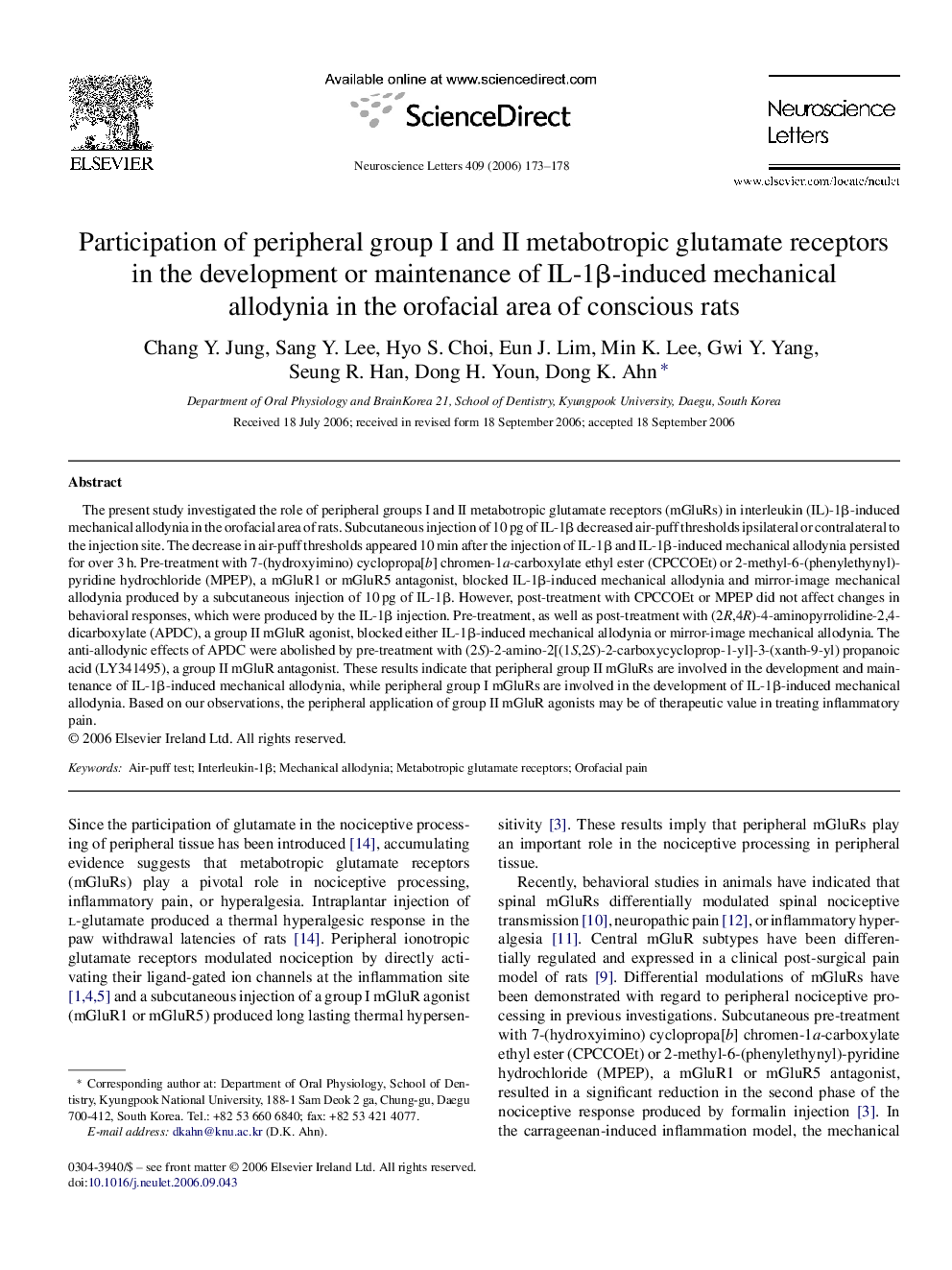| Article ID | Journal | Published Year | Pages | File Type |
|---|---|---|---|---|
| 4349969 | Neuroscience Letters | 2006 | 6 Pages |
The present study investigated the role of peripheral groups I and II metabotropic glutamate receptors (mGluRs) in interleukin (IL)-1β-induced mechanical allodynia in the orofacial area of rats. Subcutaneous injection of 10 pg of IL-1β decreased air-puff thresholds ipsilateral or contralateral to the injection site. The decrease in air-puff thresholds appeared 10 min after the injection of IL-1β and IL-1β-induced mechanical allodynia persisted for over 3 h. Pre-treatment with 7-(hydroxyimino) cyclopropa[b] chromen-1a-carboxylate ethyl ester (CPCCOEt) or 2-methyl-6-(phenylethynyl)-pyridine hydrochloride (MPEP), a mGluR1 or mGluR5 antagonist, blocked IL-1β-induced mechanical allodynia and mirror-image mechanical allodynia produced by a subcutaneous injection of 10 pg of IL-1β. However, post-treatment with CPCCOEt or MPEP did not affect changes in behavioral responses, which were produced by the IL-1β injection. Pre-treatment, as well as post-treatment with (2R,4R)-4-aminopyrrolidine-2,4-dicarboxylate (APDC), a group II mGluR agonist, blocked either IL-1β-induced mechanical allodynia or mirror-image mechanical allodynia. The anti-allodynic effects of APDC were abolished by pre-treatment with (2S)-2-amino-2[(1S,2S)-2-carboxycycloprop-1-yl]-3-(xanth-9-yl) propanoic acid (LY341495), a group II mGluR antagonist. These results indicate that peripheral group II mGluRs are involved in the development and maintenance of IL-1β-induced mechanical allodynia, while peripheral group I mGluRs are involved in the development of IL-1β-induced mechanical allodynia. Based on our observations, the peripheral application of group II mGluR agonists may be of therapeutic value in treating inflammatory pain.
